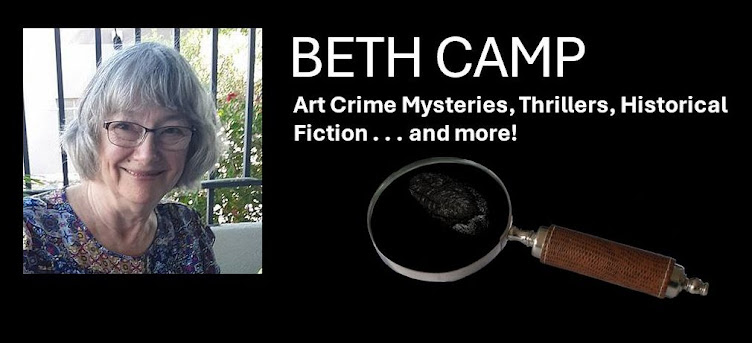This week's Sunday Scribblings asks us to write a winter tale. Here is a beginning . . . Once upon a time and very far away, near a scattering of islands in the southernmost sea, lived a pod of young mermaids. They sang songs, played surfing games in the sea, and chased fish to eat. Each day was endless. At night, they floated to sleep under the light of the moon.
As each mermaid became a certain age, she consulted the
Book of Mermaids about her quest. One by one, the mermaids disappeared until only two were left, Dariella and Marel, the youngest mermaid. Marel wanted to leave their island home together, but Dariella insisted on going first. “This is the way of our people,” she said. “I must go on my quest alone.”
The next morning, before the sun came up, Dariella swam north, leaving Marel behind. “If I do not return, you know what to do.”
Day after day passed. Marel waited, thinking perhaps today would be the day that Dariella would return, flashing through the surf. Each morning, Marel searched the waves, looking for her sister. The palm trees and the sandy beaches were unchanged. Dariella did not return.
Marel found the
Book of Mermaids hidden in a cave on the north edge of the island. She opened its silver leaves edged with seaweed, and learned she was to swim out into the deep sea, survive a storm, and find her destiny. She closed the book and hid it under the rocks.
On the last morning, Marel swam in ever larger circles around the island, hoping to find some hint in the deep green sea of what direction she was to travel. Suddenly, a storm blew up, and she could no longer see the island for the mountains of waves that thundered out of the north.
Marel was tossed up on the white breakers and down into the deepest troughs. She flailed against the dark waters, and even though she was a mermaid, she feared she would drown. As suddenly as the waves came out of the north, so they returned, carrying Marel with them in a torrent of black waves. With each moment, Marel became colder and colder until she was as cold as the ice that surrounded her.
She swam with the waves, sometimes floating, until she came to a curious island far to the north that was made of ice, where a majestic creature sat on a throne of silver, four large polar bears protecting the woman who sat there. A wave pushed her onto the island.
“Ah,” said the creature, “the smallest and youngest mermaid. I see the
Book of Mermaids has called you here. You have come to join them, the very last of your kind.” She waved her hand, and Marel could see all of her sisters floating below her, frozen blue in the ice. One of the polar bears looked at her with great black eyes and growled.
“What would you wish me to do, oh majestic one, to meet my quest before I remain here?” For Marel knew that no one, not even the Queen of the North, could refuse her a quest.
The queen sat still and thought long. She roused herself from time to time to pet one of her polar bears, causing a shimmer of ice to fly out from her long dark cloak. Finally she said, “You must bring me proof you have caused a sailing ship to founder. If you do this, you may remain free.”
“What about my sisters?”
The queen of ice lifted her head and laughed, a sharp sound that cut the air like glass. “Go. I will think on your request and give my answer when you return. Mayhap you will find a pretty for my bears.” She laughed again.
Marel slipped into the icy water and began her long swim straight to the southern coast, where great craggy mountains rose from the ocean. Perhaps she would find a sailing ship there. And if she did not, she would see her sisters’ blue faces floating forever in her dreams.
. . . to be continued





